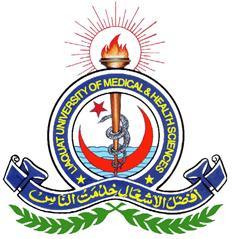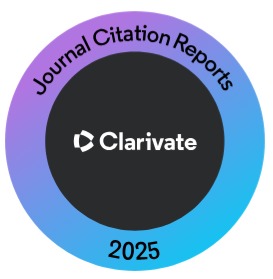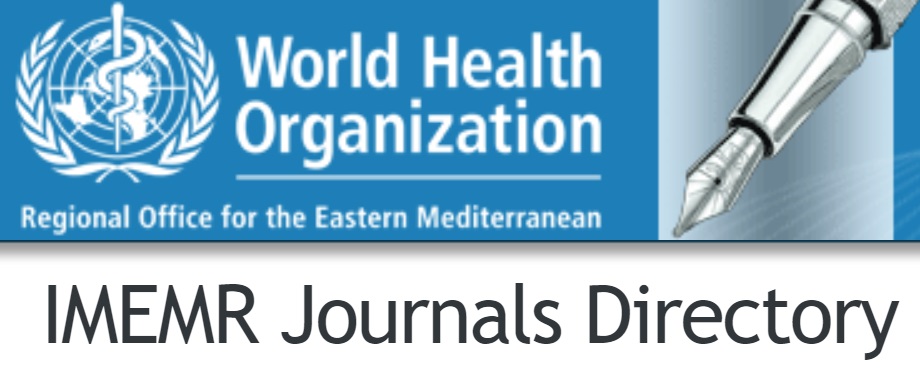Eosinopenia and Neutrophil to Lymphocyte Ratio in COVID-19 Infection, a Prospective Study from Tertiary Care Hospital in Pakistan
Keywords:
Eosinopenia, Neutrophil to lymphocyte ratio, Covid-19, PneumoniaAbstract
OBJECTIVE: To assess eosinopenia and neutrophil to lymphocyte ratio in patients admitted with COVID-19 infection and correlate with pneumonia severity.
METHODOLOGY: This prospective observational study was conducted at Covid HDU of Dr. Ruth KM Pfau Civil Hospital, Karachi, from October - December 2021. Data was collected using convenience sampling. The inclusion criteria were patients between 18-70 years with symptoms suggestive of COVID-19 and positive RT-PCR. Patients with negative RT-PCR with alternate diagnosis, history of using a corticosteroid, pancreatic or esophageal malignancy, and recent burn were excluded. Data analysis was done using SPSS version 23.
RESULTS: Out of 141 patients, 66(46%) were classified as non-severe covid and 75(53.9%) as severe covid pneumonia. A significant association between eosinopenia and COVID severity was observed. The NLR was significantly increased in severe COVID patients compared to non-severe patients. Similarly, eosinophil was decreased considerably in severe covid compared to non-severe patients (p-value<0.05). The area under the eosinopenia ROC curve is 0.71 and 0.69 on days 7 and 3, respectively. Thus, eosinopenia on day 7 was fair in predicting severe COVID-19 pneumonia compared with increased NLR, which was poor in predicting severe COVID-19. Using the area under the ROC curve, an eosinophil count cutoff of < 100 cells/mm3 produced a sensitivity of 75% for severe COVID-19 pneumonia.
CONCLUSION: Eosinopenia and elevated NLR were found with increased frequency in patients with severe COVID-19 pneumonia; however, persistent eosinopenia was a better marker than NLR in predicting COVID-19 infection severity.
References
Wang X, Zhang G, Jiang X, Zhu H, Lu Z, Xu L. Neutrophil to lymphocyte ratio in relation to risk of all-cause mortality and cardiovascular events among patients undergoing angiography or cardiac revascularization: a meta-analysis of observational studies. Atherosclerosis. 2014; 234(1): 206-213. doi:10.1016/j.atherosclerosis.2014.03.003
Eslamijouybari M, Heydari K, Maleki I, Moosazadeh M, Hedayatizadeh-Omran A, Vahedi L et al. Neutrophil-to-Lymphocyte and Platelet-to-Lymphocyte Ratios in COVID-19 Patients and Control Group and Relationship with Disease Prognosis. Caspian J Intern Med. 2020 Fall; 11(Suppl 1): 531-535. doi:10.22088/cjim.11.0.531.
Forget P, Khalifa C, Defour JP, Latinne D, Van Pel MC, De Kock M. What is the normal value of the neutrophil-to-lymphocyte ratio? BMC Res Notes. 2017; 10: 12. Published Online 2017 Jan 3. doi:10.1186/s13104-016-2335-5
Gil H, Magy N, Mauny F, Dupond JL. Value of eosinopenia in inflammatory disorders: an "old" marker revisited. Rev Med Interne. 2003; 24(7): 431-435. doi:10.1016/s0248-8663(03)00138-3.
Liu J, Li H, Luo M, Liu J, Wu L, Lin X et al. Lymphopenia predicted illness severity and recovery in patients with COVID-19: A single-centre, retrospective study. PLoS One. 2020; 15(11): e0241659. doi:10.1371/journal.pone.0241659.
Liu Y, Du X, Chen J, Jin Y, Peng L, Wang HH et al. Neutrophil-to-lymphocyte ratio as an independent risk factor for mortality in hospitalized patients with COVID-19. J Infect. 2020; 81(1): e6-e12. doi:10.1016/j.jinf.2020.04.002.
Zhang JJ, Dong X, Cao YY, Yuan YD, Yang YB, Yan YQ et al. Clinical characteristics of 140 patients infected with SARS-CoV-2 in Wuhan, China. Allergy. 2020; 75(7): 1730-1741. doi:10.1111/all.14238. Epub 2020 Feb 27.
Outh R, Boutin C, Gueudet P, Suzuki M, Saada M, Aumaître H. Eosinopenia <100/?L as a marker of active COVID-19: An observational prospective study. J Microbiol Immunol Infect. 2021; 54(1): 61-68. doi: 10.1016/j.jmii.2020.12.005.
Terradas R, Grau S, Blanch J, Riu M, Saballs P, Castells X et al. Eosinophil count and neutrophil-lymphocyte count ratio as prognostic markers in patients with bacteremia: a retrospective cohort study. PLoS One. 2012; 7(8): e42860.
doi: 10.1371/journal.pone.0042860. Epub 2012 Aug 9.
Holub K, Biete A. New pre-treatment eosinophil-related ratios as prognostic biomarkers for survival outcomes in endometrial cancer. BMC Cancer. 2018 Dec 22; 18(1): 1280. doi: 10.1186/s12885-018-5131-x.
Branicka O, Rogala B, Glück J. Eosinophil/Neutrophil/Platelet-to-Lymphocyte Ratios in Various Types of Immediate Hypersensitivity to NSAIDs: A Preliminary Study. Int Arch Allergy Immunol. 2020; 181(10): 774-782. doi: 10.1159/000509116. Epub 2020 Aug 19.
Anurag A, Jha PK, Kumar A. Differential white blood cell count in the COVID-19: A cross-sectional study of 148 patients. Diabetes Metab Syndr. 2020; 14(6): 2099-2102. doi:10.1016/j.dsx.2020.10.029. Epub 2020 Nov 2.
Georgakopoulou VE, Garmpis N, Damaskos C, Valsami S, Dimitroulis D, Diamantis E et al. The impact of peripheral eosinophil counts and eosinophil to lymphocyte ratio (ELR) in the clinical course of COVID-19 patients: A retrospective study. In Vivo. 2021; 35(1): 641-8. doi: 10.21873/invivo.12303.
Rothenberg ME. Eosinophilia. N Engl J Med. 998 May 28;338(22):1592-600. doi: 10.1056/NEJM199805283382206.
Bass DA, Gonwa TA, Szejda P, Cousart MS, DeChatelet LR, McCall CE. Eosinopenia of acute infection: production of eosinopenia by chemotactic factors of acute inflammation. J Clin Invest. 1980 Jun 1; 65(6): 1265-71.
Cortés-Vieyra R, Gutiérrez-Castellanos S, Álvarez-Aguilar C, Baizabal-Aguirre VM, Nuñez-Anita RE, Rocha-López AG et al. Behavior of eosinophil counts in recovered and deceased COVID-19 patients over the course of the disease. Viruses. 2021 Aug 24; 13(9): 1675. doi: 10.3390/v13091675.
Roca E, Ventura L, Zattra CM, Lombardi C. EOSINOPENIA: an early, effective and relevant COVID-19 biomarker?. QJM. 2021; 114(1): 68-69. doi: 10.1093/qjmed/hcaa259.
Rafai WA, Ussaid A, Riaz B, Baig FA, Anwar S, Masood A et al. Correlation of hematological findings with severity of COVID-19. Med Res Arch. 2022; 10(5): 1-13. doi: 10.18103/mra.v10i5.2740.
Tanni F, Akker E, Zaman MM, Figueroa N, Tharian B, Hupart KH. Eosinopenia and COVID-19. J AM Osteopath Assoc. 2020; 120(8): 504-8.
Soni M. Evaluation of eosinopenia as a diagnostic and prognostic indicator in COVID?19 infection. Int J Lab Hematol. 2021 Jul; 43 (Suppl 1): 137-41. doi: 10.1111/ijlh.13425. Epub 2020 Dec 8.
Henry BM, De Oliveira MH, Benoit S, Plebani M, Lippi G. Hematologic, biochemical and immune biomarker abnormalities associated with severe illness and mortality in coronavirus disease 2019 (COVID-19): a meta-analysis. Clin Chem Lab Med. 2020; 58(7): 1021-8. doi: 10.1515/cclm-2020-0369.
Waris A, Din M, Khalid A, Abbas Lail R, Shaheen A, Khan N et al. Evaluation of hematological parameters as an indicator of disease severity in Covid?19 patients: Pakistan's experience. J Clin Lab Anal. 2021 Jun; 35(6): e23809. doi: 10.1002/jcla.23809. Epub 2021 May 24.
Jemaa AB, Salhi N, Othmen MB, Ali HB, Guissouma J, Ghadhoune H et al. Evaluation of individual and combined NLR, LMR and CLR ratio for prognosis disease severity and outcomes in patients with COVID-19. Int Immunopharmacol. 2022 Aug; 109: 108781. doi: 10.1016/j.intimp.2022.108781. Epub 2022 Apr 19.
Downloads
Published
How to Cite
Issue
Section
License
Copyright (c) 2023 Journal of Liaquat University of Medical & Health Sciences

This work is licensed under a Creative Commons Attribution-NonCommercial-ShareAlike 4.0 International License.
Submission of a manuscript to the journal implies that all authors have read and agreed to the content of the undertaking form or the Terms and Conditions.
When an article is accepted for publication, the author(s) retain the copyright and are required to grant the publisher the right of first publication and other non-exclusive publishing rights to JLUMHS.
Articles published in the Journal of Liaquat University of Medical & health sciences are open access articles under a Creative Commons Attribution-Noncommercial - Share Alike 4.0 License. This license permits use, distribution and reproduction in any medium; provided the original work is properly cited and initial publication in this journal. This is in accordance with the BOAI definition of open access. In addition to that users are allowed to remix, tweak and build upon the work non-commercially as long as appropriate credit is given and the new creations are licensed under the identical terms. Or, in certain cases it can be stated that all articles and content there in are published under creative commons license unless stated otherwise.























